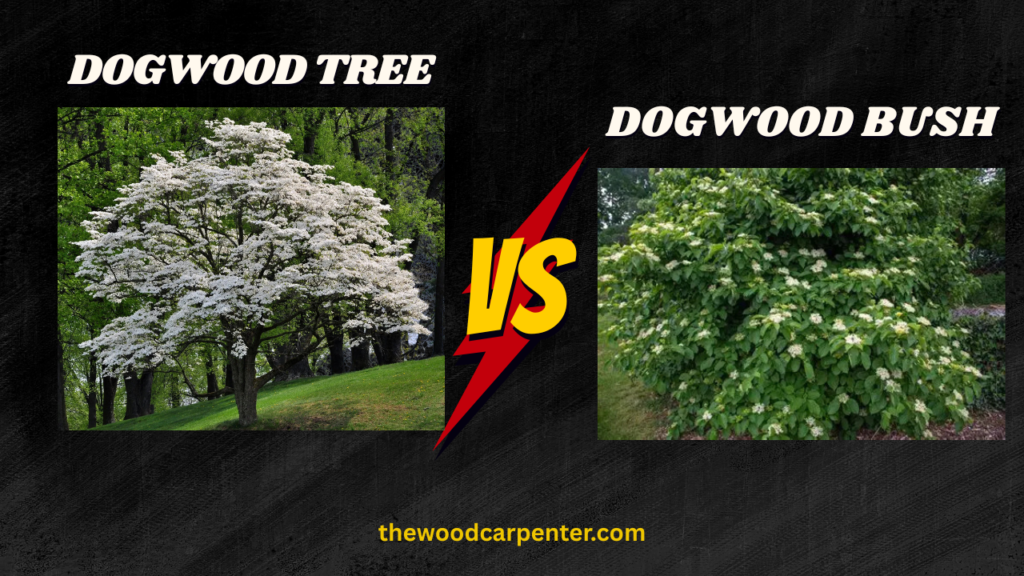
Dogwood bushes bring spring flowers, summer foliage, fall color and winter stem interest—so ensuring they get off to a strong start is key. This guide walks you through the step-by-step process of how to plant dogwood shrubs, including five mistakes gardeners often make and how to avoid them. Follow them, and you will be rewarded for your efforts with multi-season beauty and visits from wild creatures.
Types of Dogwood Bushes
Dogwood shrubs (part of the Cornus genus) come in an assortment of varieties that suit different garden styles, making it easier than ever before to find something appropriate. Here are the most sought-after varieties:
Red-Twig Dogwood (Cornus sericea) – Famous for its striking red stems that glow in winter snow. Varieties like Arctic Fire® stay compact, while Bailey’s Red Twig grows larger and is great for hedges.
Yellow-Twig Dogwood (Cornus sericea ‘Flaviramea’) – Bright golden stems in winter, which complement red–stemmed versions nicely.
Variegated Dogwood (Ivory Halo) – This is a small, colorful variety with green-and-white leaves in summer and red stems in winter.
Neon Burst Dogwood – A standout that changes color — yellow in spring, orange and red in fall.
Gray Dogwood (Cornus racemosa) – A native, wildlife-friendly choice with white berries and good tolerance for different soils.
Each type has its own charm, but all bring year-round interest.
Dogwood Shrub Size
Dogwood shrubs range from around 3 feet to 10 feet tall and wide but it depends on the variety.
Compact shrubs (3–5 feet) – It is perfect for small gardens, foundation plantings, or as colorful accents.
Mid-size shrubs (5–8 feet) – These are great for mixed borders or screening.
Large shrubs (8–10 feet) – It is as useful as hedges, naturalized plantings, or privacy screens.
Tip: Renewal pruning keeps even the larger varieties from outgrowing their space, while encouraging the brighter new stems.
Step-by-step: Planting dogwood bushes
1. Pick the right variety and the right spot
Not all dogwood varieties are the same; shrub types (red-twig, yellow-twig and variegated) work great as winter stem colors for damp areas; tree varieties such as Kousa Flowering Dogwood can make great small specimen trees.
Choosing one suited to both your USDA Zone and yard conditions is best; for instance if your summers get very hot then pick a heat tolerant variety and position it where it gets morning sun and afternoon shade.
2. Plant at the right time
Plant in the spring or early summer when the soil is workable and the plant can establish before the dormancy. Try to avoid hot, dry spells and planting in the heat of summer if possible.
3. Prepare the hole and the planting area
Dig a hole twice as wide as the root ball but no deeper than the container’s depth— because the dogwoods need the root flare at or slightly above the soil level. Try to loosen compacted soil around the hole. If the drainage is poor, consider a shallow berm or raised planting area so that the roots won’t sit in the water.
4. Handle the root ball with care
If the shrub came in a container, then soak the root ball in the water until bubbles stop—this will rehydrate the roots and reduces transplant shock. Then gently loosen the circling roots so they spread outward instead of spiraling. For bare-root plants, soak roots before planting.
5. Set, backfill, and water deeply
Place the plant so the root flare is visible at the soil surface. Backfill with native soil mixed with a little compost if it’s very poor, but don’t over-amend—dogwoods prefer the gradual encouragement of native soil plus organic matter. Tamp gently to eliminate large air pockets, then water deeply to settle the soil.
6. Mulch — but not too close
Apply 2–4 inches of the organic mulch (wood chips or shredded bark) over the root zone to retain the moisture and moderate soil temperature. Leave around 1–2 inch gap between mulch and the trunk to prevent the rot and pest hiding places.
7. Establish a watering routine
For the first growing season, keep the soil consistently moist—deep watering once or twice a week is better than the frequent shallow watering. Adjust the frequency for rain and your soil type: sandy soils will dry faster; clay holds water. After establishment, water during droughts.
8. Aftercare: pruning and feeding
Dogwoods typically need minimal fertilization. If you choose to feed, use a slow-release formula in early spring after checking your soil, using only gentle methods like pruning minimally (remove dead and crossing branches as necessary), renewal pruning (removing 1/3rd of oldest canes at base every couple years for red-twig shrubs to maintain vibrant stem color), as well as doing renewal pruning every couple years during late winter or early spring prior to active growth.
5 Common Dogwood Planting Mistakes — and how to avoid them
Mistake 1 — Planting too deep
Why it hurts: The buried root flares and it leads to rot, poor growth and sometimes death.
Fix: Set the plant so the root flare sits at the soil level. If you can’t see a flare, use the same depth as it was in the container.
Mistake 2 — Ignoring drainage and soil type
Why it hurts: Dogwoods dislike the waterlogged roots and also hate bone-dry compacted soil.
Fix: Choose a spot with moist-but-well-drained soil or build a slight berm. Add organic matter to heavy clay to improve the texture.
Mistake 3 — Not rehydrating or changing pot-bound roots
Why it hurts: Dry, circling roots won’t spread. That delays the establishment and reduces the vigor.
Fix: Soak the root ball before planting and gently loosen the roots so that they can grow outward.
Mistake 4 — Watering wrong (too little or too much)
Why it hurts: Under-watering causes stress; over-watering suffocates roots and invites disease.
Fix: Aim for consistent moisture the first year—deep watering when the top 2–3 inches dry out, less when soil stays damp after rain.
Mistake 5 — Pruning at the wrong time or over-pruning
Why it hurts: Pruning during the growing season can attract borers and stress the plant. Over-pruning removes flowering wood and winter interest.
Fix: Prune in late winter/early spring before buds open. For red-twig dogwoods, selectively remove old canes at the base to stimulate new colorful stems.
Quick tips that matter
- Give larger shrubs 6–8 feet of clearance from buildings or other large plants.
- Mulch helps, but never pile it against the trunk.
- If you want birds, leave some fruit-bearing varieties—many dogwoods attract cardinals, waxwings and thrushes.
- Watch for pests/diseases: leaf spots, anthracnose, dogwood borers and scale can occur—good cultural care reduces risk.
Dogwood Shrub Care
Caring for a dogwood shrub doesn’t require a green thumb—it’s more about consistency.
Water: In the first year, water regularly so soil stays evenly moist. Once established, dogwoods handle short dry spells.
Soil: They thrive in slightly acidic, well-drained soil but adapt to many soil types if not waterlogged.
Fertilizer: Most dogwoods don’t need heavy feeding. If leaves look pale, apply a slow-release fertilizer in spring.
Mulch: 2–4 inches of organic mulch keeps roots cool and moist.
Pests/Diseases: Watch for dogwood borers, scale, and leaf spot. Good airflow and proper planting reduce issues.
Also read:
Ultimate Guide to Rubber Plant Care: Indoor & Outdoor Tips
Maidenhair Fern Plant: Complete Guide to Growing and Caring
Dogwood Bush Pruning
Pruning keeps your shrub both healthy and attractive. The golden rule is: less is more.
Renewal Pruning: Every couple of years, remove about one-third of the oldest stems at ground level. This encourages fresh new stems, which are brighter in color.
Shape Control: Thin out unwanted suckers or crossing branches to keep the plant tidy.
Best Timing: Late winter to early spring, before new growth begins. Avoid heavy summer pruning, which stresses the shrub.
Is There a Difference Between a Dogwood Tree and a Dogwood Bush?

Yes! Both belong to the Cornus genus, but they grow differently.
Dogwood Trees: Usually single-trunk or multi-trunk small trees (15–30 feet tall). Examples: Cornus florida (flowering dogwood) and Cornus kousa (Kousa dogwood). Known for spectacular blossoms in spring.
Dogwood Bushes: Multi-stemmed shrubs (3–10 feet tall) with showy stems, berries, and foliage. They don’t grow into tree form.
If you’re short on space or want a hedge or winter color, go for shrubs. If you want a statement plant with spring flowers, a dogwood tree is the better choice.
Where Is the Best Place to Plant a Dogwood Bush?
The best spot for a dogwood shrub balances light, soil, and space:
Light: Full sun to part shade. In hot climates, afternoon shade prevents leaf scorch.
Soil: Moist but well-drained soil enriched with organic matter. They tolerate clay or sandy soil with improvements.
Space: Leave at least 6 feet between larger varieties so they don’t crowd.
Landscape Uses: Along borders, near water features, as winter focal points, or grouped for hedges. Their stems pop beautifully against snow or evergreen backdrops.
FAQ:
Q: When is the best time to plant dogwood bushes?
A: Early spring or fall, allowing roots to establish before extreme heat or cold.
Q: How deep should I plant a dogwood bush?
A: Plant at the same depth as the nursery container; root flare should be visible at soil level. Hole width should be twice the root ball.
Q: How often should I water newly planted dogwoods?
A: Keep soil consistently moist during the first season; deep watering once or twice a week is recommended, adjusted for rainfall.
Q: Do dogwoods need full sun?
A: They prefer morning sun with afternoon shade or part shade, especially in hot climates.
Q: When is the best time to prune dogwood shrubs?
A: Late winter to early spring before new growth begins.
Q: How do I maintain the winter color of red-twig dogwood?
A: Remove the oldest one-third of canes at the base every 1–2 years to encourage fresh, colorful stems.
Q: How fast do dogwoods grow?
A: Typically about 1–2 feet per year once established.
Q: Can dogwoods grow in containers?
A: Yes, smaller varieties like Arctic Fire thrive in large containers with consistent watering.
Q: Do dogwoods attract wildlife?
A: Yes, birds enjoy the berries and pollinators visit the flowers.
Q: How long do dogwood shrubs live?
A: With proper care, they can live 20–30 years or more.

